Offensive at Krosny, or Four days in the life of Siberian shooters
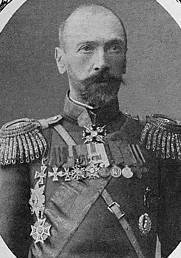
Lieutenant-General N. F. Krause, Chief of the 4 Siberian Rifle Division.
The regiment spent the night on the 1 in October at der. Golashevo - between Korpki and Golashevo. An order came - in 7 hours to launch an attack on the folk. Golashev, gosp. dv Moshna and Gnosin. There was a strong fog, taking advantage of which, the regiment, sending forward the foot reconnaissance, moved forward in battle formation. The 4 th battalion marched to the left of Domanev, having the 2 th and 1 th battalions to the right of themselves. The 3 Battalion was in the regimental reserve.
Already heard the shots of guns and the rattle of machine guns, but not in the direction of the Russian offensive. Chains move in an even step forward - closer and closer to the planned points. Approaching Domanev, I had to take to the right - because there was a marsh ahead. On the line of folk. The Domanev Battalion stopped and sent companies into the 3 chain (the 16 Company remained at the Folk. In reserve, where they immediately began digging in - after all, they had already begun to squeal bullets). From here, clearly, the deployment and movement of the 2 and 4 battalions were evident.
Calmly, without haste, the companies, as if in a peaceful atmosphere, made their own maneuver, moving over the streams and swamp to the position indicated by them - without paying any attention to the shrapnels rushing over their heads and to the huge fountains of dirt and earth from exploding blasting shells. The kind of peacetime maneuver violated only reality: here and there gray overcoats remained in place - some lay motionless, others quietly and barely moving - dead and wounded.
By 12 hours of the day, the regiment was occupied by the position in this order: from the master. dv Moshna to the left to the Gnosin - 2-th battalion, more to the right of gosp. dv Moshna - 4-th battalion (on the way from Dvor Moshna to folk. Krosna) - having 13-th, 14-th and 15-th company in the chain and 16-th company in reserve; to the right of the 4 th battalion - from f. Krosna - 1-th battalion.
In this position, the regiment held the whole day. During the day, the wounded were constantly passing through the 16 company, heading for the dressing station located in Folv. Golashev. The Sibirtsev artillery began at 15 hours a heavy shelling of the enemy's position - preparing an attack. At night, the 16 Company was ordered to neutralize the artificial obstacles - deep ditches with water and a bridge over a flowing stream. At about 2 of the night, an order was received for the 16-i company to take up a position to the right of the 15-th company - with a ledge at the back and linked with the 1-th battalion. At about 3 hours of night, the company took up a position to the right of the 15 company (but on the same line as it) because it didn’t allow the marsh to stand behind, and also linked up with the companies of the 1 battalion, whose left flank was located in Folv. Krosna.
The 16 Company took a position along a ditch along the road — near a bend with a tree — and bent its right flank along a ditch that runs from the bend of the road with a tree to the railway line.
Scheme number 1. shows the position of the 4 Siberian 15 battalion by 6 o'clock in the morning on October 2.
The enemy occupied the line of railroad tracks, which was completely filled with freight cars - from Prutkov to Yuzefov.
With the onset of dawn, the scouts sent along the ditch to the railroad road reported that there was no enemy presence on the canvas among the cars. Having received such a report, the 1 th platoon of the 16 th company, one by one, ran down the ditch to the railway track and, after inspecting the cars, took the canvas. Under the cover of the platoon that had come forward, the whole company passed to the railroad track.
2 schema.
Soon the rest of the 4 Battalion companies approached the railway line. Ahead of the railway line in the direction of the village. Krosna with two brick factories lay a field planted with a beetroot for a sugar factory in Yuzefovo - and heaps of harvested beetroot gathered and covered with earth were scattered throughout the field.
The space that had to run from the “piece of iron” to the nearest brick factory was equal to the steps of 800 - 1000 - but it was completely open. It was noticeable that the enemy has a machine gun 2 - one was installed in the buildings of the brick factory der. Krosna number 2, and the other - in Koshaets. From these machine guns and the railway was shelled.
The scouts, who were passing along the groove going from the railroad track to the brick plant No. 1, found out that plant No. 1 was occupied no more than a German platoon, but that there was a machine gun in the 2 building of the plant, which, together with the machine gun . Koshaetz, concentrates his fire on the place where the groove fits to the railroad track - in this place bullets lay down, ricocheting along the carriages.
A request from the chain of riflemen stretching from the 16 Company to the 15 was handed over to our artillery firing at brick factories No. 1 and No. 2. 15 - 20 minutes of waiting did not pass, as something buzzed over the heads of the Siberian shooters, and here in front of the brick factory there was an explosion, and again an explosion - just above the plant. It is transmitted along the chain: “The shells fall well”, and gray dots flashed across the open field, quickly running from one heap to another, a gray, continuous stream rushing swiftly down the ditch - this company began to run, covered by its artillery.
"Stuck" German machine gun, and then another. Their action soon affected. There was a cry: "Medics, to the wounded." A little pale, but with a bold and confident gait, the orderly runs to the first stationary gray point. The bag is uncovered, the overcoat is spread out, and a white bandage is already flashed over by a orderly on the wounded shoulder. The shooter, pale from blood loss and pain, does not groan, but courageously endures the dressing done to him.
And the bullets more and more fly by. Seeing that most of the bullets are concentrated along the ditch and injured - in the shoulder or back (since the ditch is small and does not give the shooter a complete shelter), and the bullets hit the mound at the ditch, it was ordered to run across the embankment. The first people ran up to the buildings of a brick factory and quickly scattered across buildings. Soon, the whole company focused on the plant and stepped forward - taking hollows (the pits where the clay is selected), opening the sewer to the gosp. yard and der. Biskupitsa enemy fire. Soon the arrows of the other mouth appeared. Here comes the ensign-ensign Igoshkin, the executing junior officer of the 3-th company. He arrived with the hunters.
At this time, the 1 Battalion is leading the attack and is already coming to the village. Krosna.
Opponent opened shrapnel fire. Without paying any attention to shrapnel fire, Russian chains are moving closer and closer to the village in fast rushes. Like a sea wall, they roll, and nothing can stop them. Gray dots remain in place, but the shaft is still a solid wall rolling closer and closer to the village. Among the gray masses, officers can already be recognized: here is the captain Gotsassky, the lieutenant Petrushin, the ensign Grachev and others.
Artillery fire of the enemy is stronger and stronger. Chains come, and the breaks all move back and back - but they tear and spit hot lead straight into the face of the attackers. But the arrows reached the target and nestled tightly against the stone walls of the plant - and the enemy’s shells continued to break: but he switched from shrapnel to only the blasting ones - and smashes the factories.
The commander of the 1 battalion, Captain Misyura, appears to be mounted.
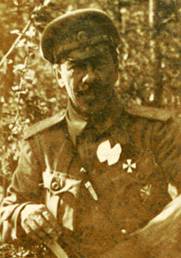
A.N. Misyura.
The officers gathered around him to find out the further course of action. It is necessary to take a position in front of Krosn and dig in - and since it is impossible to do this now due to heavy shelling, then we can begin the task at dusk. The buildings came forward and, under the cover of earthen mounds, examined the terrain and distributed plots. Artillery firing at this site has abated - rarely, rarely will a projectile fly and explode. The enemy concentrated his fire on Koshaetsu, where the 2 battalion advances.
But here again, the enemy carries the fire to this area and concentrates it near the lines of the railway. Soon everything becomes clear: the first wave of gray overcoats rolled out from behind the “piece of iron”; after a while, the other is closer and closer to the village. This is coming company 3-th battalion, which was in reserve. I could not believe that the offensive was under heavy fire from the Germans' field and heavy artillery.
Quickly, without fuss, the Siberian chains moved forward.
And again the same picture as with the onset of the 1 th battalion: the chains move forward, and the breaks go backward, without ceasing to spit with lead in the face. A heavy shell fell down, throwing a fountain of black earth up - the whole chain fell with it - but after a moment the chain moves forward again.
Again the fountain of black earth rises in front of the chain - the last one fell again, but got up and ran further - and two or three gray dots remained at the place of the break: one of them was motionless, and two were still moving. Here one of them rose and, staggering, moving behind the rolling gray wave.
And the explosions more and more often, and the remaining gray dots more and more. After a while these points move, get up and move.
But the company is already close. One can see those coming in front - the captain Makhlovts, the second lieutenant Gabaev, the captain Dobrovsky. Before the last shells are very close burst - but the valiant captain just recoiled, and then again runs forward. They have reached - and together with the first echelon of the regiment they find themselves under the cover of stone buildings.
Now der. Krosna is firmly occupied by the Siberians, and the enemy leaves, accompanied by our fire. The artillery fire subsides - and the orderlies quickly moved in the field, picking up the wounded, making them at the ligation site and sending them behind the railroad tracks - to the dressing station.
Dig graves for the dead heroes. As soon as dusk set in, companies drove out to the assumed position ahead of der. Krosna - and set about creating trenches. It is ordered to organize the latter so well - to hold on to the position won until the last drop of blood. Worked all night.
By the morning of October 3, the trenches were ready - the profile was standing with a step, and the lower ranks were finally able to rest.
Hours with 9 in the morning, the enemy began to fire heavy shells and shrapnel on brick factories No. 1 and No. 2 and (occasionally) trenches. Rifle shooting - rare. Steps in 1400 - 1200 it was clear that the enemy had dug in near the master. dv and der. Biskupice.
Hours with 14 came a lull. Taking advantage of this, the hungry arrows come out of the trenches and run to the huts (steps 300 - 400 from the trenches) - and soon you see how each of them drags large cast iron with boiled potatoes and teapots with tea. There is no opportunity to bring food - due to heavy shelling.
It is here that affects the cordial attitude of the shooters to their commanders. Each of those who brought potatoes or tea, making his way through the trench, carries several potatoes, salt and a mug of tea in paper, takes a piece of bread out of the bag and, turning, says: "Eat your nobleness, otherwise they get hungry."
Potato has some special flavor. They ate and, taking advantage of the silence, the fighters doze in various poses: who are sitting, who are lying down, at the bottom of the trench - where they have already managed to pull straw. In 18. 30. the enemy again opened heavy artillery fire - throughout the position. And received an order to be ready to attack from the enemy - probably at night.
With the onset of dusk shooting intensified on all fronts. Artillery preparation was very strong. The shells lay in heaps, raising huge fountains of earth — and pieces of shells, singing in different voices, flew overhead. Here it is buzzing, like a swarm of May beetles - it is shrapnel, while somewhere else something else is flying very close, with some kind of banging sound - it is a large fragment of a projectile. Something smacked the trench in the wall and fell at the officer's feet - this is a small piece of shell - still hot, so it barely suffers a hand. When shells explode near the trench, the earth shudders, and a metallic chime is heard. Since the beginning of the skirmish over the trenches, bullets are rushing with a special sound — tsuk-tsyuk-tsyuk are heard more and more often overhead. Here one hit in front of the trench and with a special singing sound went somewhere further. It was as if a sewing machine — ti-ti-ti-ti — had begun to work — a Russian machine gun hit it. In response to him from the Germans, they attacked their machine gun - ta-ta-ta-ta, with longer pauses. A jet of water pours overhead like a swarm of machine-gun bullets. Shooting is stronger and stronger. It has become quite dark - and every fighter intensely peers ahead. Here the light of a searchlight flashed - and in the band of the dying beam the explosions of shells sparkle.
Glowing rockets flew, followed by projectiles. Shooting is getting stronger and worse. Soon the roar of shooting reaches such a force that no voice is heard. This is some kind of hell - everywhere explosions, the chatter of machine guns, solid rifle fire, the light of searchlights, the light of rockets - and around it is a dark and long autumn night. But here hours with 10. 30. the shooting calms down - starting from the right flank - and gradually goes farther and farther to the left, occasionally flashing again with greater force and again gradually falling silent. K 11. 30. there was complete silence. You can only hear how hard people breathe. They are still attentively peering ahead — full of the expectation that the guns will be roaring again and the rifles will crack. But silence is dead. An hour passed - all is quiet. Only sentries and observers remained on the ground, while people slept asleep, despite the morning cold.
The attack of the Germans was repelled on all fronts. And in the occupied trenches the fighters of the 15 Siberian stayed until the morning of October 7 - all the time under heavy artillery fire.
Such were the front days of the regiment of the Siberian shooters in the fire of the Great War.
Pictures of the life of the Siberian rifle regiment
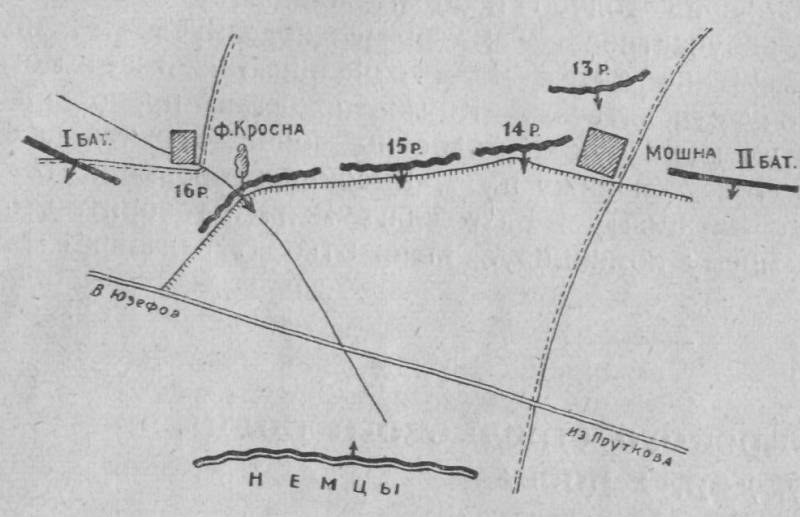
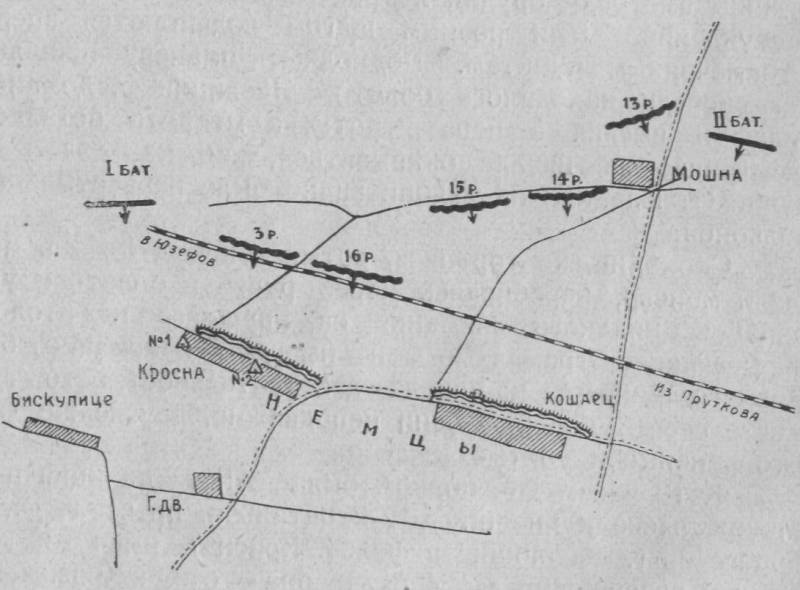
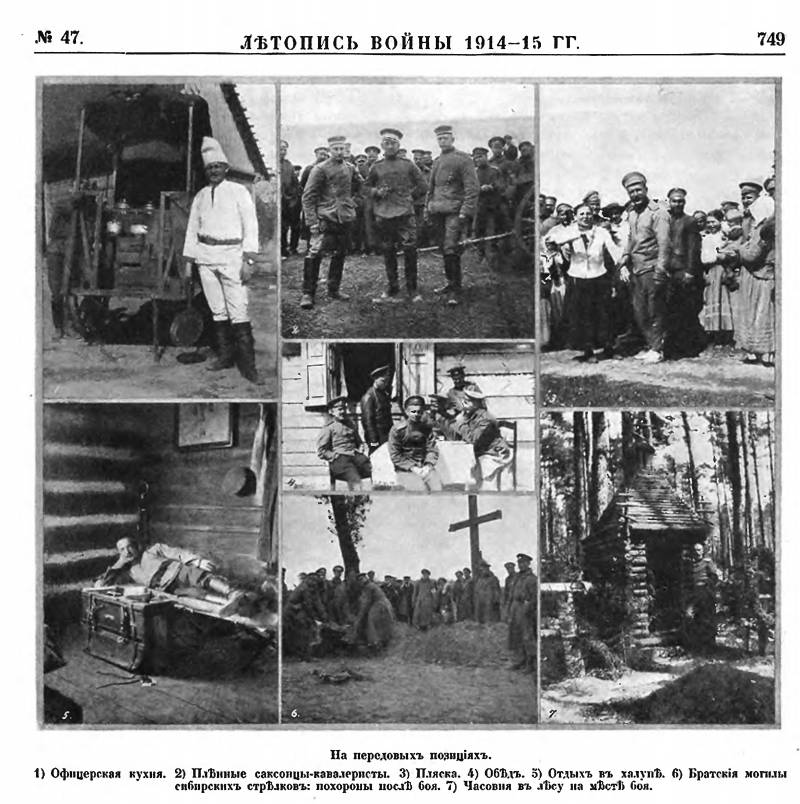
Information